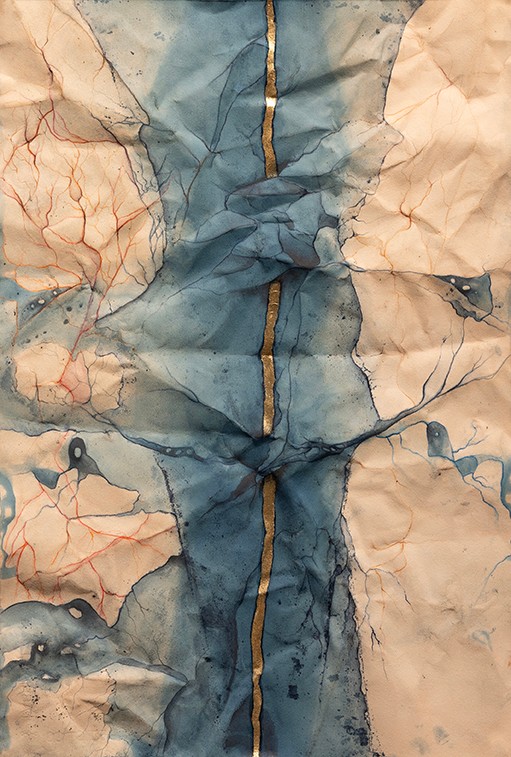Alright – so today we’ve got the honor of introducing you to Karen Hunter McLaughlin. We think you’ll enjoy our conversation, we’ve shared it below.
Karen, appreciate you joining us today. Let’s kick things off with your mission – what is it and what’s the story behind why it’s your mission?
It feels weird to call art mission-driven, but it is. Every artist’s statement is a mission statement in a way. My specific “mission” has changed over the years, but the overall arch has always been about creating an experience for the viewer. I recently read Seeing Is Forgetting the Name of the Thing One Sees, a biography of the artist Robert Irwin. What most interested me in his life was his dedication not to the question, but to the answer. His life work was about how art is perceived, how the object is not as important as the perception of that object. This fascinates me. In recent years, what draws me to making art is the wonder of it and hopefully sharing that sensation of wonderment with the viewer.


Awesome – so before we get into the rest of our questions, can you briefly introduce yourself to our readers.
I am a visual artist. Like many, my path started as a child. I fully remember drawing on the wallpaper in my childhood bedroom, making characters out of the flowers. I was probably 5 years old and they were my first imaginary friends. Aside from a short time as a preteen when I wanted to be a paleontologist (I still LOVE science), I’ve always wanted to be an artist. But as an adult, I needed a way to make the money needed to pursue my path. Society doesn’t value visual arts as a whole which is why most artists pull income from other sources. I spent 25 years in the print graphics business and the last 12 as a solo-preneur in a website design and development business. I’m very proud of that business. It was creative and personal, built from the ground up with little help, and it allowed me to pursue my art practice simultaneously.
I just retired from that business and I’m now using the digital assets learned to augment my 2D visual art. Most of my art is still 2D visual analog art. But I’ve added augmented reality to several pieces that allow me to increase that feeling of wonderment I mentioned. I’m also researching Virtual Reality. This seems like a bug jump for me but at the same time is so exciting!

Can you share a story from your journey that illustrates your resilience?
During the early days of the COVID-19 quarantine, I read a book called Underland by adventurer Robert McFarlane. I guess I couldn’t be adventuring in real life so I dived virtually. That book was the beginning of a new body of work for me that explored the mystery of the mycorrhizal network– the symbiotic association between the plant world and fungi. I was able to secure an artist residency at Cheltenham Center for the Arts during that time. I was the only resident of the usual three so I had the entire building to myself. Oddly the new body of work was about connections, maybe because those were hard to come by during that otherworldly shutdown. I was drawing on the deep connections between trees, plants, and mycelia– how they invisibly share what the other lack, how they rescue each other. It was my among the first times I used augmented reality to add another dimension to my work. This is from my website page on that body of work I titled Over/Underland:
“Close your eyes and conjure the feeling of becoming the dust of the universe- the star particles that are part of all of us. The “all” that has no taxonomy, particles that have been here for millennia and will be here long after we’re gone. Imagine deep, dark spaces where mycorrhizae mesh with all living things. Look for transcendence in the mystical corners of your mind. In this, I empower you to find soothing hope and a catalyst for healing whatever you need healed.”


Is there mission driving your creative journey?
As mentioned my recent work explores themes related to the connections we have with each other but also my long-held interests in the connections between natural science and art. My work investigates kinship with the more-than-human world, and a dive into “Ki”, Robin Wall Kimmerer’s suggested pronoun for other-than-human. Employing a language of shapes that mimic the threadlike hyphae of mycelium, the same marks are often used to illustrate galactic space, brain synapses, and other human, and non-human body systems. They are perfect symbols of the matrices that support the essential nexus of human connection.

Contact Info:
- Website: https://karen-hunter-mclaughlin.com
- Instagram: https://www.instagram.com/kamcl
- Youtube: https://www.youtube.com/@karenhuntermclaughlin9721


